Giveaway Time! Leave a comment after my article to be in the running to win one of two paperback copies of ‘In Bed with the Tudors’ by Amy Licence. Conditions of Entry below. Good luck!
Competition now closed!
The Mystery of Queen Anne Boleyn’s Second Pregnancy
By Natalie Grueninger
In most recent biographies, Anne Boleyn’s second pregnancy, at the most, occupies a couple of paragraphs. Eric Ives and David Loades conclude that it ended in a miscarriage, Alison Weir in The Six Wives of Henry VIII states that ‘it was either stillborn, or died very soon after birth’ (pg. 271), Antonia Fraser suggests that ‘the most likely end was a stillbirth: probably a month or so early’ (pg. 218), David Starkey sums it all up by stating that it ‘ended in miscarriage or still birth’ (pg. 553) and Paul Friedmann, writing in the late nineteenth century, concluded that ‘Anne had been mistaken about her condition’ (pg. 151) and had never been pregnant. Only in The Rise and Fall of Anne Boleyn, does the author, historian Retha Warnicke, go into some detail in her attempt to unravel the tapestry of secrecy shrouding the events of the summer of 1534.
While researching my debut book, In the Footsteps of Anne Boleyn, my co-author, Sarah Morris, and I examined what contemporary evidence exists and pieced together a tragic story.
Christmas 1533 at Greenwich was a jovial and lively affair. John Husee informed Lord Lisle that, ‘The King has kept a great court and is as merry and lusty as ever I see.’ On New Year’s Day there was the customary exchange of gifts, Queen Anne presented the king with:
A goodly gilt bason, having a rail or board of gold in the midst of the brim, garnished with rubies and pearls, wherein standeth a fountain, also having a rail of gold about it garnished with diamonds; out thereof issueth water, at the teats of three naked women standing at the foot of the same fountain.
Retha Warnicke believes that Anne’s gift ‘must be characterised as a fertility symbol.’ (pg.173) If Anne was in fact already hinting at her condition then we can assume that she became pregnant sometime around November 1533.
On 5 January, in the instructions to Nicholas Heath and Christopher Mont, who were being sent on embassy to the German princes, Henry praised his wife:
‘whose approved and excellent virtues, that is to say, the purity of her life, her constant virginity, her maidenly and womanly pudicity, her soberness, her chasteness, her meekness, her wisdom, her descent of right noble and high parentage, her education in all good and laudable thewes and manners, her aptness to procreation of children, with other infinite good qualities, more to be regarded and esteemed than the only progeny, be of such approved excellency as cannot be but most acceptable unto Almighty God, and deserve His high grace and favour, to the singular weal and benefit of the King’s realm and subjects.’
It seems that Henry was already aware that his wife was again pregnant, inspiring the reference to her ‘aptness’ to procreate children.
By 23 January 1534, imperial sources had been informed that Queen Anne was ‘again in the family way’ allegedly by a letter from the newly arrived English ambassador in France. Eric Ives postulates that if the ambassador was Lord William Howard, ‘the date of arrival must have been the beginning of December, suggesting that Anne became pregnant in November 1533.’ (Pg. 394) By 28 January, Eustace Chapuys was aware of Anne’s condition and on 29 January, it was observed that, ‘The King and Queen are merry.’
In February, Henry VIII met with Chapuys and confirmed the rumours of Anne’s pregnancy by saying that he believed he’d shortly have a son.
On 27 April, Anne’s receiver-general, George Taylor, wrote to Lady Lisle of the king and queen’s good health and of Anne’s ‘goodly belly’.
By April 1534, the pregnancy was common knowledge. The king, confident and beaming, expected a prince and ordered from his goldsmith, Cornelius Hayes, an elaborate silver cradle:
A silver cradle, price 16l. For making a silver plate, altering the images, making the roses underneath the cradle, the roses about the pillars, and new burnishing, 13s. 4d. For the stones that were set in gold in the cradle, 15s.; for fringes, the gold about the cushions, tassels, white satin, cloth of gold, lining, sypars and swadylbands, 13s. 6d. Total, 18l. 1s. 10d. The silver that went to the dressing of the Adam and Eve, the making of all the apples, the gilding of the foot and setting of the currall, 33s. 4d.
At around the same time, a portrait medal was struck to commemorate the anticipated birth of a son, it was inscribed with Queen Anne’s motto, The Moost Happi, Anno 1534 and A. R for Anna Regina. Since the baby did not survive, multiple copies were not commissioned, however, the prototype survives and is today stored in the British Museum.
In early June, Henry was in the midst of planning a trip to Calais to meet with Francis I. It was scheduled to take place on 20 August or soon after, presumably after Anne’s lying-in, again corroborating the argument that the queen had become pregnant sometime around November 1533.
On 26 June Sir Edward Ryngeley reports that the ‘King and Queen are merry’ at Hampton Court Palace. However, quite suddenly, on 2 July Henry leaves Anne behind and moves to The More, where he summoned Thomas Cromwell and Anne’s uncle, the Duke of Norfolk, to meet him on 5 July. At around this time the decision was made to send the queen’s brother, George Boleyn, ‘with all speed’ on a special embassy to France, in order to delay the planned meeting between Henry and Francis on account of the queen’s advanced pregnancy and her desire to have her husband, the king, by her side at this time.
Lord Rochford’s instructions were as follows:
1.Rochford is to repair to the French king with all speed, and in passing by Paris to make the King’s and Queen’s hearty recommendations to the queen of Navarre, if she be there, and say that the Queen his mistress much rejoices in the deeply-rooted amity of the two kings, but wishes her to get the interview deferred, as the time would be very inconvenient to her, and the King is so anxious to see his good brother that he will not put it off on her account. Her reasons are, that being so far gone with child, she could not cross the sea with the King, and she would be deprived of his Highness’s presence when it was most necessary, unless the interview can be deferred till April next. Rochford is to press this matter very earnestly, and say that the King having at this time appointed another personage to go to his good brother, the Queen, with much suit, got leave for Rochford to go in his place, principally on this account.
2. That there was nothing she regretted at the last interview so much as not having an interview with the said queen of Navarre ; and she hopes she may be able to come to Calais with her brother in April next, if the interview be deferred till then.
It seems very likely that the proposed meeting was cancelled because sometime between 26 June and 2 July, disaster struck – Anne was delivered of a stillborn baby, after which the king, no doubt crushed by his wife’s failure to provide him with a living heir, left her behind at Hampton Court and commenced his already delayed summer progress.
In our book, Sarah Morris and I suggest that:
‘No longer able to face Francis, who was already the father of three healthy sons, a cover story was created to save face and the whole event swept under the carpet.’ (Pg. 167)
On 18 July we hear from John Husee that ‘The King is now at Oking [Woking Palace Surrey], and comes hither on Tuesday, and will tarry here and at Eltham till Friday, when he will meet with the Queen at Guildford. Southwark, 18 July.’
The king was planning to visit the Princess Elizabeth at Eltham Palace before joining the queen at Guildford, where they were reunited sometime toward the end of July or the beginning of August. The king and queen had been apart for more than a month, their longest period of separation since 1528, when Anne had retired from court in anticipation of the arrival of Cardinal Campeggio.
It is not until the end of September 1534, that Chapuys reports that ‘the lady’ (Anne Boleyn) was not going to have a baby after all. At the same time we hear through Chapuys that rumour had it, Henry doubted whether the queen had ever been pregnant, an idea explored by J. Dewhurst in Medical History.
Dewhurst suggested that Anne might have suffered from a case of pseudocyesis or false pregnancy, a rare condition where a woman believes that she is carrying a baby and shows pregnancy-like symptoms when she is not pregnant. The condition is yet to be fully explained, however, psychologists believe that most women who experience false pregnancy are often experiencing stress and anxiety, along with an extremely strong desire to be pregnant.
Having only just given birth to a healthy daughter in September 1533, I don’t believe this to be a reasonable argument. There is absolutely no evidence to suggest that Anne was under any stress around the time of her alleged second pregnancy. On the contrary, the reports we have paint the picture of a healthy and happy couple.
In the notes section of his biography of Anne Boleyn, Eric Ives states:
“That it was a miscarriage and not a stillbirth or neonatal death is indicated by the queen not having ‘taken her chamber’” (pg. 394)
That there is no record of the queen having ‘taken her chamber’ is indisputable, however, does this prove that Anne did not suffer a stillbirth? Not necessarily.
Ives himself stated that it’s likely Anne was pregnant by November 1533, in which case by the beginning of July, when it’s generally accepted that she lost the baby, she would have been around 8 months pregnant.
In modern terms, a miscarriage is generally defined as the loss of a baby before 20-24 weeks; the death of a fetus at 8 months gestation is referred to as a stillbirth. In this case the mother still needs to go through labour and delivery in the same manner as mothers delivering a live baby.
In light of the evidence, it seems likely that Anne went into labour prematurely sometime between 26 June and 2 July, explaining why no records survive of the queen’s confinement. This leaves open the possibility that the loss was so devastating, so damaging, especially considering that Henry was still trying to prove to the world the righteousness of his marriage, that all present were sworn to secrecy and the whole incident erased from history.
Unless one has experienced such heartbreak, it’s difficult to imagine the overwhelming emotional and physical pain that Anne must have felt. The baby would have been well formed and the sex determinable, although, the details were not recorded. The king left Hampton Court in all haste and abandoned his grieving wife. Was the loss of an heir the reason for their extended and uncharacteristic separation? The silence of the royal nursery and the empty silver cradle, perhaps, too much for even a hardened king —and one well-versed in loss— to bear.
This event must have brought memories of Katherine of Aragon’s tragic obstetric history flooding back and sowed a seed of doubt in the king’s mind that would eventually grow to consume him. Anne had promised Henry sons and heirs but had only delivered a daughter and a stillborn baby. In the king’s eyes, she’d failed him; with Henry’s insecurities awakened, there would be no room for further disappointments.
References & Sources Calendar of State Papers, Spain, Volume 5 Part 1 – 1534-1535 Letters and Papers, Foreign and Domestic, Henry VIII, Volume 6 – 1533. Letters and Papers, Foreign and Domestic, Henry VIII, Volume 7 – 1534. Fraser, A. The Six Wives of Henry VIII, 1992. Friedmann, P. Anne Boleyn, trans. J. Wilkinson, 2013. Grueninger, N. & Morris, S. In the Footsteps of Anne Boleyn, 2013. Ives, E. The Life and Death of Anne Boleyn, 2004. Loades, D. The Six Wives of Henry VIII, 2010. Starkey, D. Six Wives, 2003. Warnicke, R. The Rise and Fall of Anne Boleyn, 1989. Weir, A. The Six Wives of Henry VIII, 2007. The Mystery of Queen Anne Boleyn’s Second Pregnancy Good luck! Conditions of Entry For your chance to win a paperback copy of In Bed with the Tudors you must be subscribed to On the Tudor Trail’s newsletter (if you are not already, sign up on our homepage). Then simply leave a comment after my post between now and January 22, 2014.Don’t forget to leave your name and a contact email.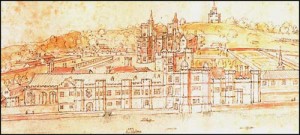

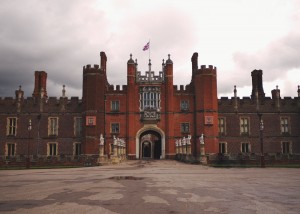

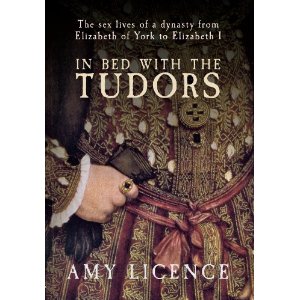


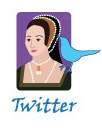




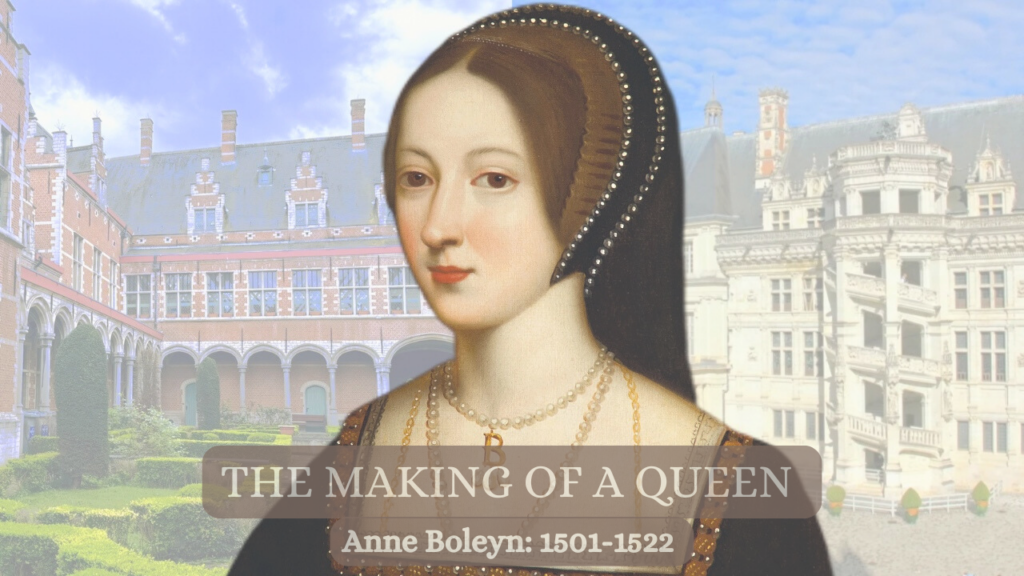
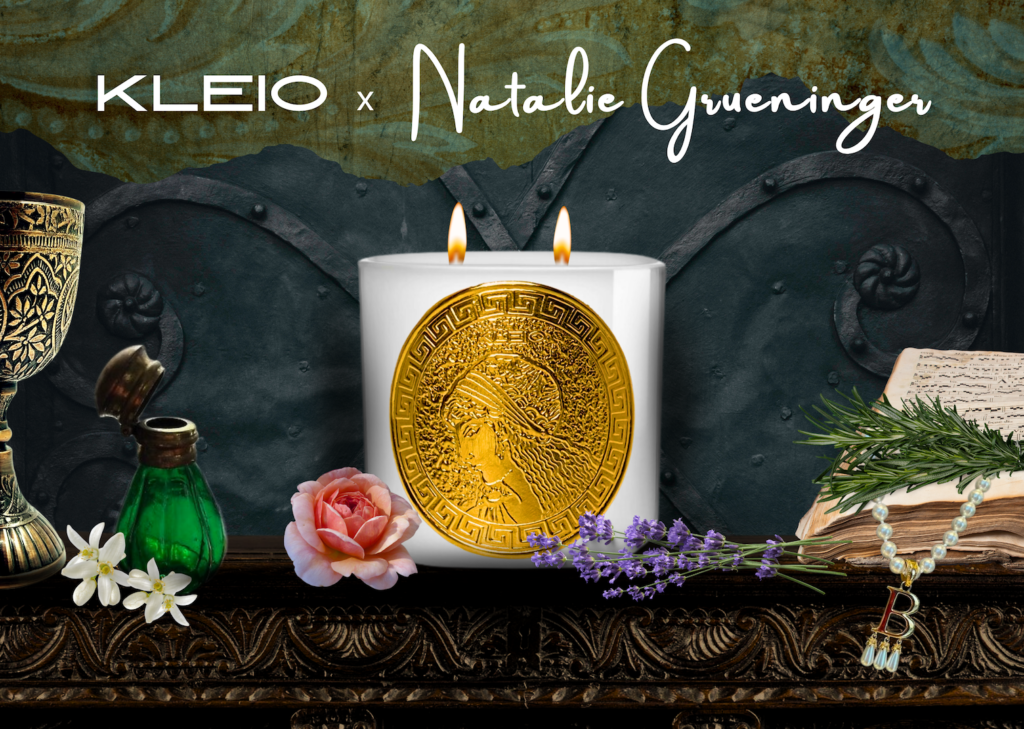













Fascinating article – would love to read your book.
Vey interesting! I love the Tudor drama!
Would love to read the book
Despite all of Anne’s efforts, knowing she was never able to conceive again always breaks my heart. I can only imagine the emotional distress she went through. Love your posts! Can’t wait to read your book.
I love reading about Anne! Fascinating about her pregnancy!
It always saddens me the misfortunes that fell upon Anne and Henry. My how history would have been different had she produced a don and heir. I remember seeing a television program or reading about a theory that Anne may have had a condition (I do not recall the name) that made it physically impossible for her to carry another child. Have you researched this theory at all?
Fascinating, I am so glad that we have you to glimpse into one of the most interesting periods of history. Thank you.
Great article, I am glad that you decided to write on her second pregnancy, though its mentioned it doesn’t seem to get much as her first pregnancy or even her last. Can’t help but feel sorry for Anne, I can’t imagine what it would be like to lose a child.
Thank you so much for running this web site. I never tire of learning more about this time period in English history. My family came from England in the mid 1600’s and I look forward to one day having time to trace them back that far. I look forward to reading your new novel.
Anne Boleyn has always fascinated me. I cannot imagine living her life, or dying her death. Whichever way she lost her baby was tragic. Losing a baby is difficult enough, but when you know you could lose your husband, your marriage, your reputation and social standing and maybe even your life because of that, how tragic in so many ways. Thank you for this article!
loved the summary of what could have happened to the 2nd baby if there was ever once conceived I also can’t wait for my copy of retracing of anne boleyn this is very interesting period and time I love it
Wonderful article! I cant wait to read your book!
Too bad there is no record of the sex of the baby, if it was a stillbirth. Either way, it was another nail in the coffin of their marriage, thanks to Henry’s obsession with the succession. 🙁
I’ve been enjoying your ‘Trail of Anne Boleyn’ posts on FB, and your further insights through articles such as this are fantastic. I’ve always felt so much sympathy for Anne and the precarious position she found herself in, and your dedication to researching her and all things Tudor is an absolute treat. I’ve been to England twice (visiting from Canada) and have been to several of the places you’ve featured, and through you I’m building a list of other places I intend to take in the next time we go. Thank you!
How very interesting! Great article.
I’m so glad I stumbled across your site. It’s been intriguing reading more deeply into the Tudor reign. I’ve been deeply interested for years, and have a nightstand full of books to confirm it! Thanks for sharing with us.
A very well researched and thought provoking acticle!
Poor Anne she paid the ultimate price for the King’s inadequate sperm, for as known today it’s the male partner that determines the sex of the child. Maybe inadequate is the incorrect word for the King’s sperm perhaps the “widely distributed” would be a better description, which lessens the probability in producing a male baby. How different would History read today if these facts were known in Tudor Times?
Great post! This provides what I think is the most apt description of Annes second pregnancy which most historians seem all too keen to shy away from (with the notable exception of Eric Ives). One thing that always struck me was the unknown sex of the baby. She was far enough along for that to be visible as you mentioned, so I have to wonder if its lack of mention in any record is a tacit admission that it was a girl, since Annes infamous third pregnancy was so well recorded and described the fetus as male. Or maybe I’m just way off lol and it just shows how rapidly Annes position declined from this tragic incident to the next. Thanks for this great post!
Sounds like a fascinating read!!
I’ve also heard that Anne may have suffered from some type of blood disorder that may have effectively deterred any pregnancies following the successful birth of Elizabeth. Any truth to this?
I have been fascinated by the Tudors for years now, especially Henry VIII and his wives. Thank you for providing this wonderful page!
great giveaway!
this is a very intriguing article. I feel deeply for Anne and Henry as well. I believe if the child would of been born Henry would not have killed Anne. Her only salvation was a male child and she lost it. I have read in another book how Anne had become overtaken with grief when her uncle told her Henry had died in the jousting event . Also that Anne walked in on Henry with Jane Seymour on his lap and became upset. Im not sure which event happened first or if the incident with Jane Seymour is fact. After this is when her miscarriage happened. Is it even possible that these events could of led to her miscarriage? (sure hope i win) ( i really want this book) {madamzero8@gmail.com}
This is such an excellent read. The Tudor time has always interested me. Thank you for this article.
Anne Boleyn, in general, has always fascinated me. The notion that a woman of that time could hold such power over a man, is mind boggling. Her second pregnancy is a subject that definitely needs more attention, especially if it was the catalyst which divided such a great relationship.
I absolutely adore learning about the Tudors and I relish any opportunity to soak up information relating to them! I would love to read your book!
Great article! I’ve always been fascinated by Anne’s second pregnancy. I think it will remain one of the great mysteries about her, unless new information is found.
I’ve not heard of In Bed With The Tudors, sounds like a great read!
Ravin
lady00diamond@hotmail.com
So sad!! I couldn’t even imagine how she would have felt.
I always imagine how different things would’ve been if Anne did have a male child. I also wonder how it would’ve changed Elizabeth.
Very interesting article. I have always wondered about this.
Thanks for sharing.
I love every thing to do with the tudors and history…. my husband and I had a renaissance wedding and I would love to win this book! I need a new one to read.
I also signed up for your newsletters!
Excellent post! You have done a wonderful job of exploring this confusing subject. There is so much information written out there on Anne and some of it can be misleading. You take that information and analyze it in such a way as to make it clearer to us.
I feel so bad for Anne! I can’t imagine how she felt losing her second child. I wish things have turned out differntly for her.
I feel so bad for Anne, I wish things had turned out differentely for her. King Henry should not have left her when her second child died, she needed him and he ran off, I guess the loss was too much for him!
I love everything about the Tudor era and read everything I can get my hands on!
I am a fan of yours Natalie.
Henry “abandoned his grieving wife” 500 years later my heart goes out to Queen Ann. The anguish she must have felt. and Henry treated her horrible. If her baby had been born, had survived, history would have changed. RIP Queen Ann Boleyn. .
I only recently became obsessed with all things Tudor . I already have many books. It will be great to have this one.
An interesting insight into the different theories. I agree with you about the idea of the false pregnancy being unlikely as it was not that long after the birth of Elizabeth.
I always feel so sorry for Anne Boleyn in the loss of this baby.
If it had survived and been a son, so much would have been different.
I’d also love to win a copy of your book (and I had no trouble signing up to your newsletter?).
Extremely interesting piece. Wonderful to read a more in depth take on something which is usually given a few lines. Definatly learn something new 🙂
I wonder how different history would have been if Anne had carried the baby to term and it had been born healthy. What a tragedy.
Very much enjoy your newletter and blog.
The book – “In bed with the Tudors” sounds very interesting.
What a fascinating and tragic article! Thank you for drawing attention to the subject.
Simply wonderful article! I love learning more and more about the Tudors. It is an absolutely fascinating time period to me 🙂
Honestly i just became a fan of Anne and any English history because of the love of my lifes passion for it. i enjoy listening to her talk about this passion of hers and i would love to win a book for her, 🙂
Fascinating article! I have many books on theTudors… my favorite period of history, and I am always looking for more details on those fascinating people. I had always thought her second pregnancy was a stillborn son which turned Henry against her. He was so consumed with the need for a male heir and felt the clock ticking away. In desperation, he started to look elsewhere to achieve that. Tragic story. Would love to have a copy of your book!
Love your facebook posts and the articles you post! Love learning new facts about the Tudors! Have read this book and would love to win a copy 🙂
Wonderful article! There are some intriguing theories out there about Anne and her pregnancies, but nothing is more intriguing than the truth. Being a mum and reading this article does make me sad. I couldn’t imagine losing a child in the way Anne did having the pressure of the world on your shoulders. You would want to mourn in your own way and privately, but as queen and in such a pressured situation she couldn’t. It’s heartbreaking.
Great article. What a terrible time to be a woman!! I love the time period and all thing Tudor but how terrible it must have been to be a woman. To be blamed for the sex of the baby like you had a say. What a strong woman Anne must truly have been…which is probably where Elizabeth got it from!! Thank you for the article
I’ll definitely be quoting this in my text paper for my medieval literature and history course.